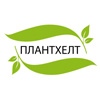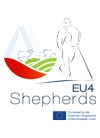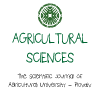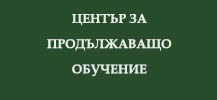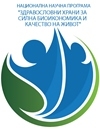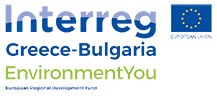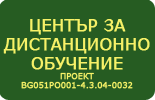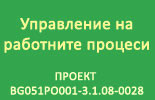Biological control
|
Course title: |
Biological control |
|
|
Course code: |
RZBIC |
|
|
ECTS: |
5 |
|
|
In-class hours |
Lectures: |
30 |
|
Laboratory work/Tutorials: |
30 |
|
|
Self-preparation hours |
Practical training: |
5 |
|
Other: |
60 |
|
|
Total hours: |
125 |
|
|
Language: |
English |
|
|
Study cycle: |
Bachelor, Master |
|
|
Semester: |
Summer |
|
|
Faculty: |
Faculty of Plant Protection and Agriecology |
|
|
Name of the lecturer(s): |
Prof. Vili Harizanova, PhD |
|
|
Mode of delivery: |
Face-to-face, distance learning |
|
|
Prerequisites: |
Entomology |
|
|
Learning outcomes of the course unit: |
The module will provide appropriate knowledge about the morphology, biology and behavior (life and reproductive strategies), ecology (population dynamics, effects of abiotic and biotic factors on the populations), behavior, regulating abilities, identification and application of predatory and parasitoid insects with particular regard to the beneficial species mass-produced for biological control of agricultural pests. The student should be able to: identify the most important predatory or parasitoid species; on the basis of the population density of a pest and regulating abilities of the native populations of bio-control agents to take decision for further control measures against a specific pest; to be able to choose the best bio-control agent for a specific pest. |
|
|
Course contents: |
Biological control – definition and history Natural control – factors influencing population density of pests. Interspecific and intraspecific relationships. Introduction of biocontrol agents (classical biological control) Inoculative and inundative release Conservation of native beneficial insects Mass rearing of biocontrol agents Semiochemicals in pest control Insect hormone’s analogs and application in pest control Insect Sterile Technique (IST) Insect pathology Viral diseases of insects Bacterial diseases of insects Fungal diseases of insects Protozoan disease of insects Entomopathogenic and entomoparasitic nematodes Predatory bugs (Hemiptera: Anthocoridae, Nabidae, Miridae, Pentatomidae) Predatory beetles (Coleoptera: Carabidae, Staphylinidae, Coccinellidae) Predatory lacewings (Neuroptera: Chrysopidae, Hemerobiidae) Predatory flies (Diptera: Syrphidae, Cecidomyiidae) Predatory mites Parasitic wasps (Hymenoptera: Ichneumonidae, Braconidae, Aphelinidae, Encyrtidae, Trichogrammatidae, Scelionidae, Pteromalidae) Parasitic flies (Diptera: Tachinidae) |
|
|
Recommended or required reading: |
1. Paul Debach & David Rosen, 1991. Biological control by natural enemies. Cambridge University Press 2. Van Lenteren J.C. (ed.) 2003. Quality Control and Production of Biological Control Agents. Theory and Testing Procedures. CABI Publishing 3. Ann E. Hajek, 2004. Natural Enemies. An Introduction to Biological control. Cambridge University Press 4. Vincent C., M.S.Goettel & G. Lazarovits (eds), 2007. Biological Control. A Global Perspective. CABI 5. Roy Van Driesche, Mark Hoddle and Ted Center, 2008. Control of Pests and Weeds by Natural Enemies. Blackwell publishing |
|
|
Planned learning activities and teaching methods: |
Monological explanation (lecture, presentation, briefing, tutorials), Dialogue methods(conversation,discussion). |
|
|
Assessment methods and criteria: |
Written exam |
|
 - Events on the occasion of the 80th anniversary of AU
- Events on the occasion of the 80th anniversary of AU
